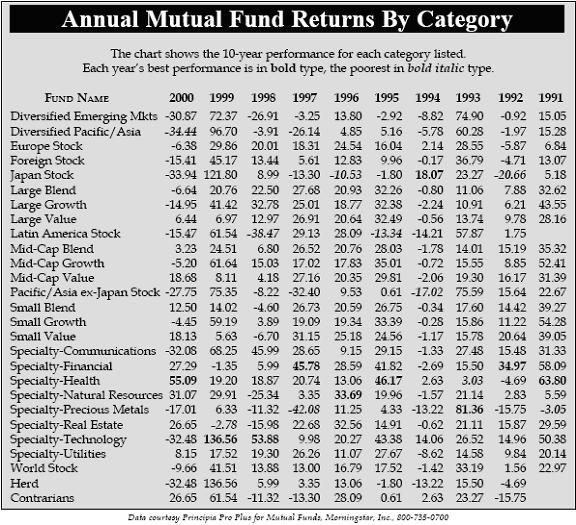In 2008, investors feared the collapse of money market funds. The Securities and Exchange Commission (SEC) established new regulations to help stabilize the industry. Now, concerns about the European debt crisis are putting the regulations to the test.
Money market funds invest in short-term, high-quality securities such as commercial paper, certificates of deposit and government securities. The goal is to maintain a net asset value (NAV) of $1 per share, and many investors consider these funds as safe as cash. However, during the Great Recession, some investors lost confidence in the safety of money market funds because the market in which they transact dried up. Some were close to falling below a $1 NAV— referred to as “breaking the buck.” This became a reality for the Reserve Primary Fund. The fund was crippled by losses on debt it held from Lehman Brothers when Lehman filed for bankruptcy in September 2008. The fund’s NAV dropped to $0.97 per share, which was only the second time a money market fund had ever broken the buck. Redemption requests were suspended, and the fund began liquidating. As of July 2010, about 99 percent of the fund’s assets as of the day of the bankruptcy filing have been returned to investors, and the fund is still liquidating.
Following the collapse of the Reserve Primary Fund, investors removed more than $300 billion, or about 14 percent, from taxable prime money market funds, according to the Investment Company Institute. To calm investors’ fears, the U.S. Treasury created a temporary guarantee program. There appeared to be a real threat that the money market industry would have collapsed without that federal guarantee.
Since the onset of the European crisis in 2010, news about the exposure of money market funds to banks in the region — particularly in Portugal, Ireland, Italy, Greece and Spain — have investors wondering if a repeat of 2008 is on the horizon. A reported 14 percent of money market fund holdings are issued by foreign banks, a large portion of which are in Europe. With the nationalization of banks in Ireland, unemployment of over 20 percent in Spain, and governments across the region implementing austerity plans, European banks face a tough climate. Investors' concerns are understandable.
However, the new regulations issued by the SEC in February 2010 have helped address many of the issues that plagued money market funds in 2008.
The SEC rules have three broad goals:
- Improve the portfolio quality and liquidity of funds.
- Improve investor confidence in funds by requiring more disclosure.
- Allow funds to protect against runs during a crisis.
Improve Portfolio Quality And Liquidity
The SEC imposed more stringent rules on the types of securities that money market funds can hold, and required funds to meet new liquidity standards to ensure that they can fulfill redemption requests. The new rules shorten the weighted average maturity (WAM) of a fund from 90 days to 60 days, and set the weighted average life (WAL) of a fund at 120 days. The key difference between a fund’s WAM and WAL is the WAL takes into account the final maturity of adjustable-rate securities instead of their interest rate reset period. For example, if a fund holds an adjustable-rate security maturing in a year and its interest rate resets every 30 days, the maturity of the security would be 30 days for calculating the WAM and 365 days for WAL. By limiting a fund’s WAL, the SEC hopes to restrict the extent to which a fund can invest in securities that may expose it to more risk. The rules also prohibit money market funds from purchasing government securities with remaining maturities of more than 397 days. The previous limit was 762 days.
Restrictions were placed on the amount a fund can hold in securities that do not carry the highest ratings, known as Second Tier securities. The SEC lowered the percentage of total assets that can be invested in these securities from 5 percent to 3 percent, lowered the limit on exposure to any single Second Tier issuer from 1 percent to 0.5 percent, and restricted the maturity of the securities to 45 days. New daily and weekly liquidity limits were implemented, and funds must perform stress tests to determine how they will react to various market situations, such as an increase in interest rates or the downgrade or default of a portfolio security.
Increase Public Disclosure
A major reason investors hurried to withdraw money from money market funds after the Reserve Primary Fund collapsed was that the investors could not determine their own funds’ exposure to Lehman Brothers. Under the new SEC rules, money market funds are required to post their holdings on websites monthly and to maintain the data for six months. This will give investors more information about the investments held by their money market funds.
The new regulations also require funds to report their market-based NAVs (“shadow NAV”) to the SEC monthly. This will be made available to the public with a 60-day lag. Currently, funds report this information only twice a year, with a 60-day lag. Most investors are unaware that money market funds vary from their $1 per share NAVs (e.g., $0.9999 or $1.0001) because of market movements. Fund operators are allowed to round transactions to $1 per share.
Though they are well-intentioned, the new disclosure requirements could have unintended consequences as a result of lack of investor knowledge about how money market funds operate. If investors see that the money market funds they own consistently trade below $1, this may trigger investors to pull money from otherwise stable funds. This regulation will increase the burden on money fund operators to explain to investors what the “shadow NAV” is, and what it means for their investments.
Protect Against Runs
The new SEC rules give companies that operate money market funds more leeway to purchase distressed or defaulted assets to prevent a fund from breaking the buck. The board of directors of a money market fund may also suspend redemptions if:
- The fund has broken or is about to break the buck
- The board has decided to liquidate the fund
- The fund has notified the SEC
These steps seek to ensure equitable treatment of money market fund investors. When funds face runs by investors, they are forced to liquidate otherwise stable investments at fire-sale prices, exacerbating losses. Investors whose redemption requests are fulfilled later tend to absorb most of the losses. By allowing funds to suspend redemptions, funds can liquidate their investments in an orderly fashion, which should limit some of the losses and distribute those losses more equitably among investors. In exchange for more stability during a panic, investors will sacrifice their ability to redeem shares at will.
In addition, starting Oct. 31, 2011, all funds must have systems in place to meet redemption requests at prices other than $1 per share. This will allow investors to redeem their shares in a timely manner.
What Changes Mean For Investors
In general, the new liquidity and portfolio quality rules make money market funds safer. The shift toward shorter-term investments lowers the interest rate and credit risk of the funds, and increases their stability. This should limit losses for investors in the event of a default. Under the new disclosure requirements, investors now have the information they need to assess the holdings of funds. If a European bank were to fail, money market fund operators have more tools to ensure that investor losses are not magnified by runs on the fund.
The new regulations come with some costs. The lower risk profiles of funds mean a reduction in yield. Some money market fund operators estimate that the changes will reduce the yield of their funds by as much as 0.30 percent (reducing a fund’s yield from 1 percent to 0.70 percent, for example). In addition, money market fees and expenses will likely increase as fund companies factor in the costs to comply with the new disclosure and operational requirements. This will further reduce the yields investors receive. That said, the SEC reforms make money market funds better able to withstand crises.











